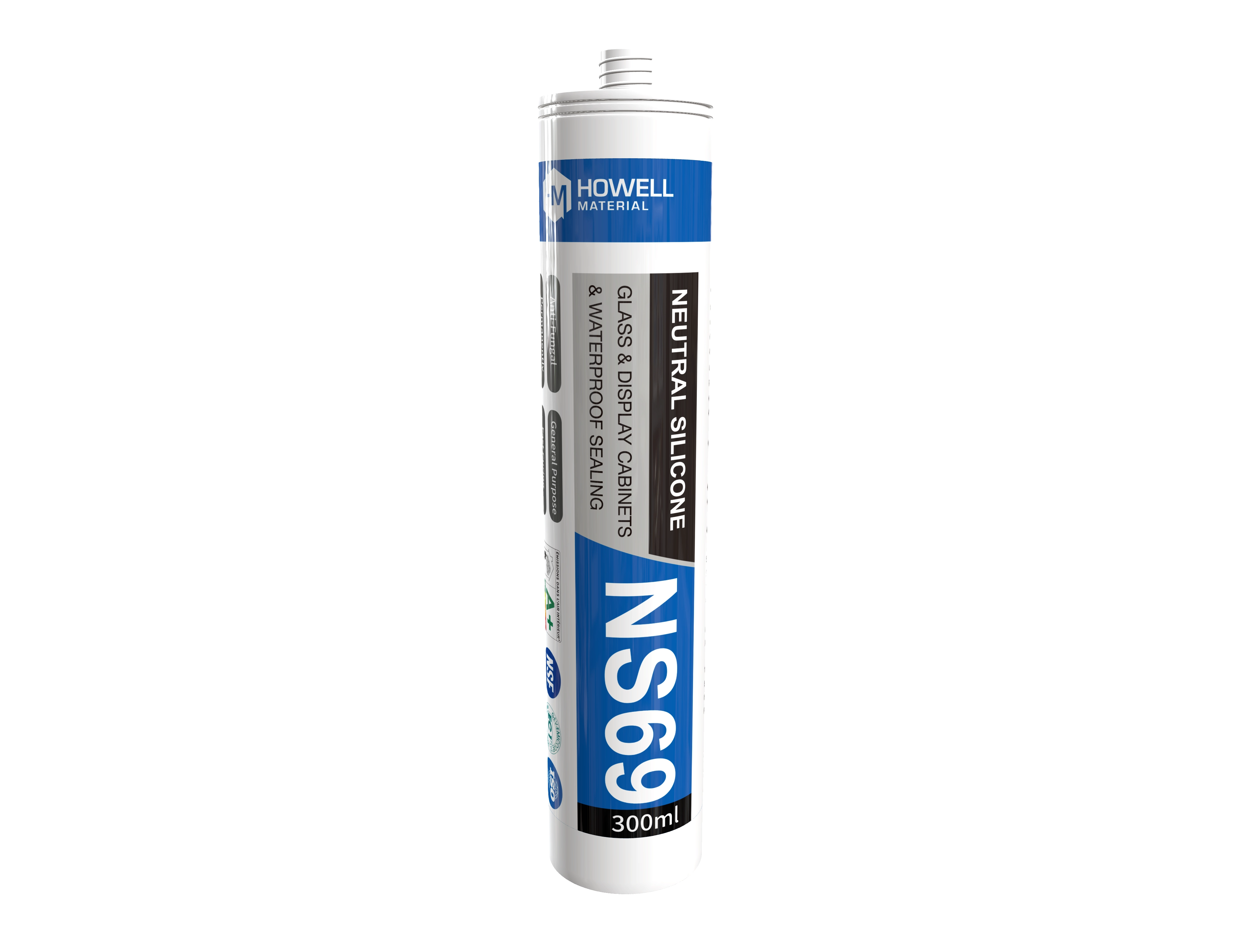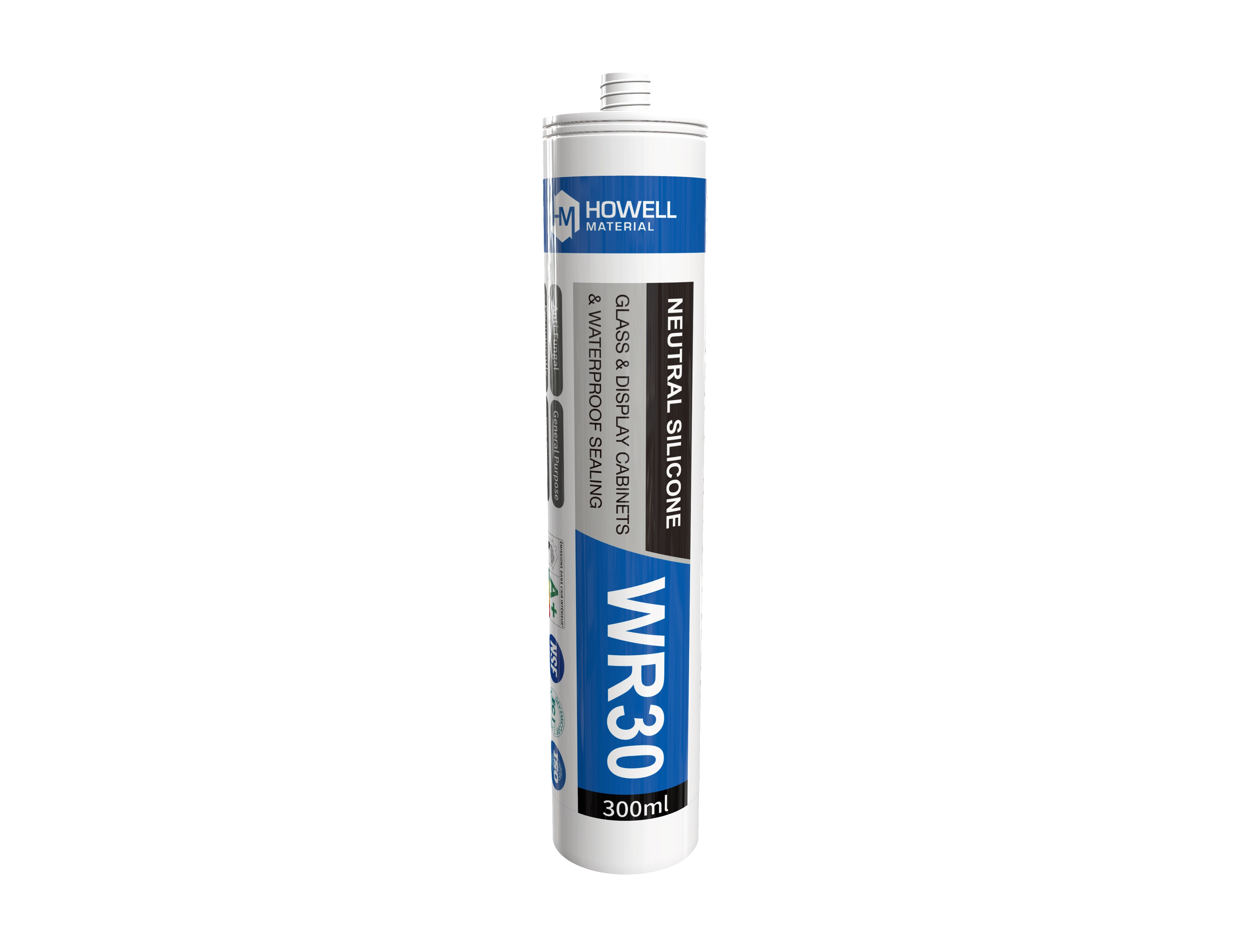Views: 127 Author: Site Editor Publish Time: 2025-10-29 Origin: Site
Silicone sealant is one of the most versatile materials used in construction, manufacturing, and home improvement. Recognized for its flexibility, durability, and resistance to moisture and temperature extremes, silicone sealant is essential wherever airtight or watertight joints are needed. Whether bonding glass panels in skyscrapers, sealing bathroom tiles, or insulating electrical components, silicone sealant ensures long-lasting protection and stability. Understanding its diverse uses and advantages helps professionals and homeowners make informed choices for reliable sealing and bonding applications.
Silicone sealant is a type of adhesive made primarily from silicone polymers. Unlike traditional sealants such as acrylic or polyurethane, silicone remains flexible even after curing, allowing it to withstand movement, vibration, and temperature fluctuations without cracking or shrinking. This elasticity makes it ideal for sealing joints that experience expansion and contraction over time.
| Property | Description | Benefit |
|---|---|---|
| Elasticity | Retains flexibility after curing | Prevents cracking under stress |
| Water Resistance | Impermeable to moisture | Ideal for bathrooms, kitchens, and marine use |
| Temperature Tolerance | Withstands -50°C to 200°C | Suitable for indoor and outdoor environments |
| Adhesion Strength | Bonds to various materials | Works on glass, metal, ceramic, wood, and plastic |
| Longevity | Resistant to UV and weathering | Ensures years of durability without degradation |
Because of these properties, silicone sealant is a go-to solution for both structural and finishing applications across industries.

In construction, silicone sealant plays a crucial role in maintaining the structural integrity and weather resistance of buildings. It is commonly used for sealing joints, gaps, and seams in materials that expand or contract due to temperature changes.
Facade Sealing: Silicone sealant seals joints between concrete panels, ensuring water and air do not penetrate building exteriors.
Glass Bonding: It is the adhesive of choice in curtain wall systems and glazing, offering transparency and flexibility while securely holding glass panels.
Window and Door Frames: Silicone provides airtight sealing around frames, preventing drafts, leaks, and energy loss.
Expansion Joints: In high-rise structures, expansion joints must remain flexible; silicone sealant maintains elasticity to absorb movement without cracking.
Silicone’s ability to resist UV radiation and extreme temperatures ensures long-lasting protection for both modern glass skyscrapers and traditional masonry buildings.
Within homes, silicone sealant is invaluable for moisture-prone and high-temperature areas. Its resistance to mold, mildew, and water makes it ideal for use in kitchens and bathrooms.
| Area | Application | Function |
|---|---|---|
| Bathrooms | Around bathtubs, sinks, showers, and tiles | Prevents water leaks and mold growth |
| Kitchens | Sealing around countertops and backsplashes | Protects against spills, grease, and steam |
| Living Rooms | Window and door sealing | Enhances insulation and soundproofing |
| Utility Rooms | Washing machine or sink connections | Prevents moisture damage and corrosion |
Silicone sealant forms a watertight barrier that expands and contracts with temperature and humidity changes. Homeowners often prefer neutral-cure silicone sealants, which release no unpleasant odors and bond well with metals and plastics commonly found in modern interiors.
Beyond domestic and construction applications, silicone sealant is integral in manufacturing, industrial assembly, and automotive maintenance. Its resistance to oil, heat, and vibration allows it to perform under demanding conditions.
Electronics: Used to insulate and protect electronic components from moisture, dust, and vibration.
HVAC Systems: Seals ductwork joints to prevent air leaks and improve energy efficiency.
Machinery: Serves as a gasket maker and vibration damper in engines and mechanical assemblies.
Automotive: Used in sealing windshields, headlights, and body panels, as well as in gasket repairs.
Silicone’s chemical stability ensures that it doesn’t degrade when exposed to oil, coolant, or high heat—making it indispensable in mechanical and automotive environments.
Marine environments demand sealing materials that can withstand saltwater, humidity, and temperature extremes. Silicone sealant performs exceptionally well in such conditions due to its waterproof and UV-resistant nature.
Boat Windows and Decks: Creates watertight seals between glass, fiberglass, and metal parts.
Underwater Fixtures: Used for sealing through-hull fittings and underwater lights.
Outdoor Fixtures: Protects metal and glass surfaces exposed to continuous weathering, such as outdoor lighting, solar panels, and metal roofing joints.
Silicone’s ability to retain flexibility even after long-term UV and saltwater exposure makes it far superior to traditional marine adhesives.
In the electrical field, silicone sealant is valued for its insulating and protective capabilities. It prevents short circuits by blocking moisture ingress and provides long-term thermal resistance.
Cable and Connector Sealing: Keeps out dust, dirt, and moisture.
Circuit Protection: Encapsulates components to minimize vibration damage.
Lighting Systems: Used to seal LED housings and outdoor light fixtures.
Appliance Assembly: Bonds and insulates components exposed to heat or vibration.
Because it remains non-conductive, silicone sealant is ideal for environments where both safety and performance are critical.
To understand why silicone sealant is often preferred, it helps to compare it with other common sealant types.
| Type of Sealant | Flexibility | Water Resistance | UV Resistance | Paintable | Typical Uses |
|---|---|---|---|---|---|
| Silicone | Excellent | Excellent | Excellent | No | Bathrooms, glass, outdoor, electronics |
| Acrylic | Moderate | Poor | Fair | Yes | Indoor trim, drywall, low-moisture areas |
| Polyurethane | High | Good | Moderate | Yes | Concrete joints, construction, flooring |
| Butyl Rubber | Fair | Excellent | Fair | No | Roofing, automotive, gutters |
Silicone stands out for its all-around resistance and elasticity, although its non-paintable nature can be a drawback in aesthetic applications. In contrast, acrylic sealants are better for painted surfaces but fail in high-moisture environments.

Even the best product will fail if applied incorrectly. Understanding proper surface preparation, curing, and maintenance is vital for achieving lasting results.
Clean and Dry the Surface: Remove dust, oil, and old sealant residues.
Use Masking Tape: Ensures neat edges and prevents over-application.
Cut the Nozzle at an Angle: Provides better control over bead size.
Apply Evenly and Smooth the Joint: Use a wet finger or tool for consistent adhesion.
Allow Full Curing Time: Typically 24 to 48 hours depending on temperature and humidity.
Proper application maximizes adhesion strength and extends the sealant’s service life. Additionally, periodic inspection helps identify and reseal any degraded joints before leaks or structural damage occur.
Silicone sealant is far more than a simple household adhesive—it’s a critical material in construction, manufacturing, marine, and electrical industries. Its unique combination of elasticity, durability, and resistance to moisture and temperature makes it indispensable for long-term sealing and bonding applications. Whether protecting bathroom tiles from mold, securing glass panels on skyscrapers, or insulating electrical circuits, silicone sealant delivers unmatched performance and reliability. For anyone seeking an enduring, flexible seal in challenging conditions, silicone sealant remains the most effective choice.
1. Can silicone sealant be used on all surfaces?
Silicone sealant adheres to most surfaces, including glass, ceramic, metal, and certain plastics. However, it may not bond well with polyethylene, polypropylene, or oily woods unless a primer is applied.
2. How long does silicone sealant take to cure?
Most silicone sealants fully cure within 24–48 hours. High-temperature or high-humidity environments may accelerate curing, while cold or dry conditions can slow it down.
3. Can silicone sealant be painted over?
Typically, silicone sealant cannot be painted once cured because of its non-stick surface. For paintable applications, consider acrylic or hybrid polymer sealants.
4. How long does silicone sealant last?
Depending on exposure and quality, silicone sealant can last 10–20 years without significant degradation, especially when used indoors or in UV-resistant formulations.
5. What is the difference between neutral-cure and acid-cure silicone sealants?
Acid-cure silicones release acetic acid during curing, which can corrode metals or damage sensitive materials. Neutral-cure versions are odorless and suitable for most substrates, including metals and plastics.
Anti-mildew | Aquarium | Automobile | Construction Exterior Wall | Decoration | Electronics | Elevator | Farbricated Building | Home Appliances | Infrastructure | Nail Free | Pipe Thread Locking | Planar Sealing | Rail Traffic | Screw-locking | Silicone Conformal Coatings | Universal | Waterproof | Windows&Sun Romms

